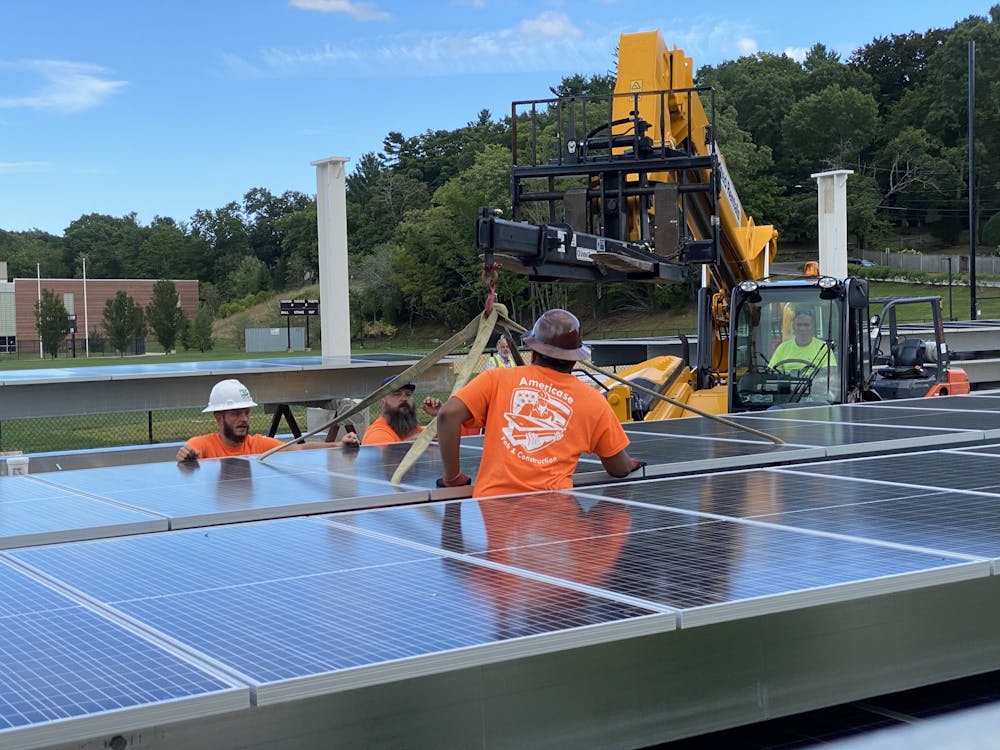Amid a wave of green investment, President Joe Biden’s Build Back Better plan pledges $500 billion of the $1.75 trillion bill to support climate programs. However, while the Biden administration can develop renewable energy systems, that doesn’t guarantee qualified workers will flock to fill jobs. Labor shortages plague small businesses in the renewable energy sector. Leticia Colon de Mejias, co-chair of Efficiency for All, a non-profit that specializes in training programs, cites lack of support for trade school and apprenticeship programs as one of the primary causes of the labor shortage. Moving forward, our commitment to the funding and generation of renewable energy should match the expansion of training programs for trades. The American government should reinvigorate and incentivize trade schools to remedy the labor shortage in our renewable energy sector.
The need for wind turbine technicians and solar photovoltaic installers is estimated to outpace job growth for statisticians, data scientists and physician assistants by 2030. So, how do we train qualified individuals to fill these positions? A bill that has yet to be passed, H.R. 156 — Blue Collar to Green Collar Jobs Development Act — could help solve this problem. H.R. 156 includes prompting the Department of Energy to improve training for energy careers nationwide, emphasizing the need for a STEM curriculum and deploying $70 million annually to pay the wages of individuals receiving training to work these jobs. The $500 billion promise the Biden administration made to climate programs should be drawn upon to cover a program like H.R. 156 or akin.
It should be recognized that if we let the free market prevail, we are bound to have stranded assets inoperable due to unchecked labor shortages. Hypothetically, if we wanted to turn carbon neutral earlier by 2030 — as reported by the National Solar Jobs Census — the solar industry could reach 400,000 jobs without policy interventions by 2030. However, this figure is estimated to be more than 500,000 jobs short of what would be necessary to operate the sustainable energy assets of that future period. Simply put, the rate at which we currently build our sustainable energy systems doesn’t match the rate at which workers are trained. A government department that awards rebates for energy training programs or some federal policy akin to H.R. 156 could assist in closing this gap.
Another reason the U.S. doesn’t see a corresponding rise of qualified laborers along with the rise of renewable systems is because most of the younger generation isn't interested in trade school. According to Tallo’s career data, Gen Z’s interest in skilled labor ranked second to last in a 22-industry list at 16.7 percent. At the top of the list resided arts, entertainment, recreation and technology. Moreover, enrollment in college is on an upward trend. Pew Research Center found in 2018 that 18 to 21-year-olds no longer in high school enrolled at a rate of 57 percent for two-year or four-year college. This data is comparable to only 43 percent of Gen X in 1987. Finally, in regards to the work environment, Border States Electric admits that the accommodations Gen Z workers often seek — flexible hours and remote work, for instance — aren’t always possible on “tight job site schedules.”
We can deploy H.R. 156 policy equivalents, yet this effort will be moot if we fund trade or vocational schools that lack attendance because of an instilled disinterest in skilled labor. So, promotion of trade school is also necessary in early education. Trade schools have every reason to be appealing. The younger generation just needs to be educated about their benefits. For starters, trade school allows citizens to graduate with a vocational certificate in one to two years, whereas a bachelor's degree can take four years or more. Moreover, the total tuition of trade school is reasonable around $33,000, which is equivalent to a single year at a four-year, accredited college. Trade school jobs’ starting pay ranges from $50,000 to $90,000 depending on the program. Even better, some top paying trades are in the energy sector, including a power plant operator at $84,287, a nuclear technician at $84,482 and an electric lineman at $75,115.
Labor shortages in the energy sector are equally a problem of policy and proper education. With Biden's Build Back Better Plan’s commitment of $500 billion to climate programs, a portion of those funds should provide rebates for trade school programs or promote a policy equivalent to H.R. 156. Again, it should be admitted that public policy and monetary incentives are meaningless if the younger generation is not interested in satisfying the labor shortage in the energy sector. A liberal arts or technology degree from a four-year college should not be the end all for the young American. Trade school is financially less burdening than college, sees more job security and pays above the average U.S. wage. To achieve carbon neutrality by the Build Back Better deadline of 2050 and avoid a stranded asset catastrophe, Americans must reevaluate their outlook on trade schools.
Rylan Dawson is an Opinion Writer for The Cavalier Daily. He can be reached at opinion@cavalierdaily.com.
The opinions expressed in this column are not necessarily those of The Cavalier Daily. Columns represent the views of the authors alone.







